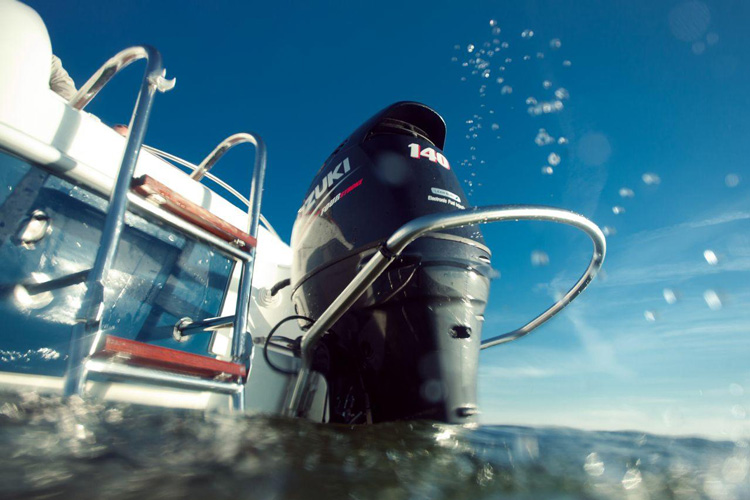How to Troubleshoot Common Outboard Motor Issues

Outboard motors are essential for small watercraft, offering mobility, speed, and power. But like any mechanical system, they can experience issues from time to time. Whether you’re a seasoned boater or new to marine engines, knowing how to troubleshoot common outboard motor problems can save you time, money, and frustration. In this guide, we’ll explore the most frequent issues boat owners face with their outboard motor and how to resolve them effectively.
Engine Won’t Start
This is one of the most common complaints among outboard motor users. If your engine doesn’t start, there are several areas to inspect.
First, check the fuel. Ensure there is enough fuel in the tank and that it hasn’t gone stale. Fuel more than a few weeks old can degrade, causing poor combustion. If the fuel is old, drain the tank and refill it with fresh gasoline mixed with the proper ratio of two-stroke oil if required.
Next, inspect the battery. A weak or dead battery can prevent the engine from cranking. Use a multimeter to check the voltage. If the reading is below 12.4 volts, recharge or replace the battery.
Also, examine the kill switch and safety lanyard. Make sure it is properly connected. A disconnected safety lanyard will disable the ignition system.
Spark plugs should be removed and inspected. If they’re fouled, dirty, or worn out, clean or replace them. A weak or no spark can be a major culprit when the engine won’t start.
Lastly, verify the primer bulb is firm. If not, squeeze it several times to pump fuel into the carburetor. Check for cracks or air leaks in the fuel line that may prevent fuel from reaching the motor.
Engine Starts but Dies Quickly
If your outboard motor starts but stalls shortly after, the issue is likely fuel-related.
Start by checking for clogs in the fuel filter. A dirty or waterlogged filter can disrupt the fuel flow. Replace the filter if necessary.
Inspect the fuel lines and connections for air leaks or kinks. Air entering the fuel system can cause the motor to stall.
Carburetor jets may also be clogged with debris. If you’re comfortable doing so, disassemble the carburetor and clean it using a carburetor cleaner. Pay special attention to the idle and main jets.
Additionally, check for proper choke operation. If the choke remains on after the engine has started, it can cause an overly rich mixture and lead to stalling. Make sure the choke disengages as the engine warms up.
Rough Idling or Poor Performance
If the engine is idling rough or performing below expectations, it may be running either too rich or too lean.
Inspect the spark plugs. Black, sooty plugs indicate a rich mixture, while white plugs suggest a lean condition. Clean or replace the spark plugs and adjust the fuel mixture as necessary.
Clean the air intake and air filter. A clogged intake restricts airflow, affecting the fuel-to-air ratio. Use a soft brush or compressed air to clean out debris.
Ensure the throttle and shift cables are properly adjusted. Misaligned cables can result in poor acceleration or a delayed response.
Consider checking the propeller. A damaged or bent propeller can cause vibration and reduce performance. Replace it if needed.
Overheating
An overheating outboard motor is a serious issue that can cause long-term damage.
Begin by checking the water intake for obstructions. Seaweed, plastic bags, or mud can block water flow and prevent cooling. Clear any blockages from the intake grates.
Next, inspect the water pump impeller. This small rubber component is responsible for circulating cooling water. If it’s worn out or damaged, replace it.
Also, monitor the thermostat. If it sticks closed, it will prevent water from circulating through the engine. Replace the thermostat if it’s faulty.
Be sure the engine is mounted correctly and that the lower unit is deep enough in the water to pull in cooling water efficiently.
Excessive Vibration or Noise
Unusual vibration or noise can signal an imbalance or mechanical issue.
Start with the propeller. Check for dings, bent blades, or fishing lines wrapped around the shaft. Any damage can cause imbalance and vibrations.
Inspect the motor mounts. Worn or loose mounts can allow excessive movement and noise. Tighten or replace the mounts as necessary.
Check the driveshaft and lower unit for damage. Unusual wear or loose internal components may require professional inspection.
Verify that the motor is securely bolted to the transom. Loose bolts can cause rattling sounds and dangerous instability.
Gear Shifting Problems
Trouble shifting gears smoothly can lead to control issues on the water.
Inspect the shift cable and linkages. Ensure there’s no corrosion or stretching that might prevent full gear engagement.
Lubricate all moving parts and joints. Sometimes friction or grime buildup can hinder motion.
Check the gearcase oil. Milky or low oil indicates water intrusion or leakage. Drain and refill the gear oil and replace the seals if needed.
Smoking or Fuel Smell
Excessive smoke or a strong fuel odor usually means the outboard motor is running too rich.
Double-check the fuel mixture, especially on two-stroke engines. An incorrect ratio of oil to gas can cause heavy smoking. Stick to the manufacturer’s recommended ratio.
Inspect the fuel system for leaks. Use your nose and eyes to detect wet spots or dripping fuel. Replace any damaged hoses or seals immediately.
Clean the carburetor or fuel injectors. Deposits can build up and affect fuel atomization, leading to inefficient combustion.
Engine Cuts Out at High Speed
When the outboard motor cuts out at higher speeds, it can be both frustrating and potentially dangerous.
Start by checking the fuel vent. A closed or clogged vent on the fuel tank can create a vacuum, starving the engine of fuel. Open the vent and ensure air can flow freely.
Inspect the fuel pickup tube and fittings. Any restriction here can reduce fuel delivery under high demand.
Look at the ignition system. A failing ignition coil or poor wiring connection may only show issues under heavy load.
Test your power trim and tilt system. If the motor kicks up at high speeds, it may be losing water pressure and overheating or aerating the propeller.
Maintenance to Prevent Common Issues
Routine maintenance can help avoid most outboard motor problems before they occur.
Regularly change the engine oil, gearcase oil, and fuel filter. Inspect the spark plugs and impeller each season.
Flush the engine with fresh water after every use in saltwater to prevent corrosion and salt buildup.
Store your motor properly in the off-season by using fuel stabilizer, fogging oil, and keeping it in a dry place.
Consult your owner’s manual for manufacturer-specific maintenance schedules and procedures.
Final Thoughts
An outboard motor is a reliable and powerful engine, but it requires attention and regular care to operate smoothly. Whether your engine won’t start, is overheating, or making unusual noises, a systematic troubleshooting approach can help identify and solve most issues. Understanding your motor’s symptoms and taking preventive action will ensure better performance, greater safety, and longer life for your boating investment.






